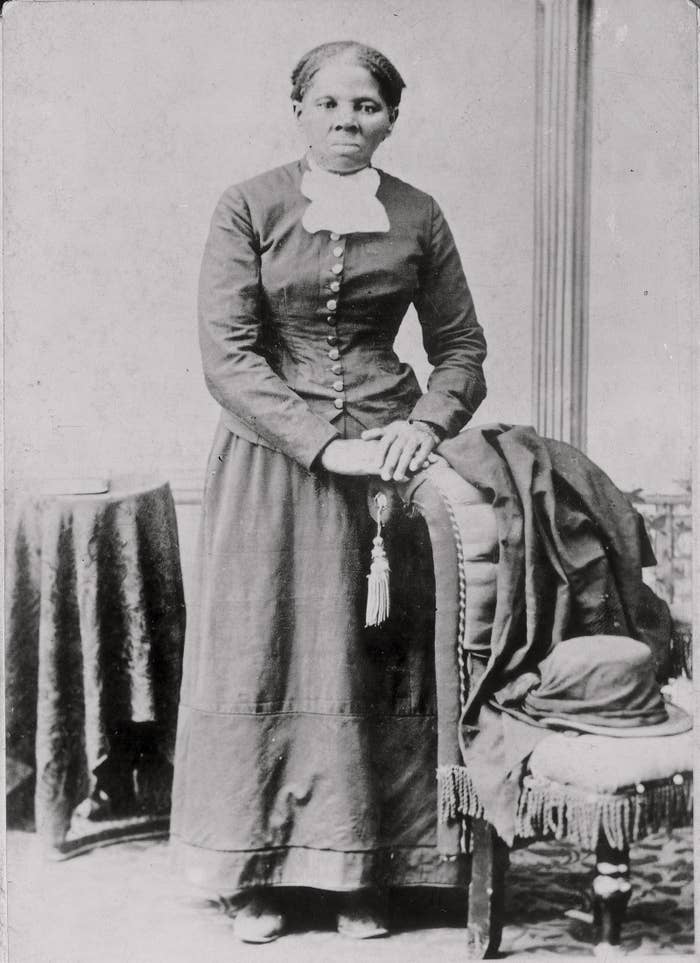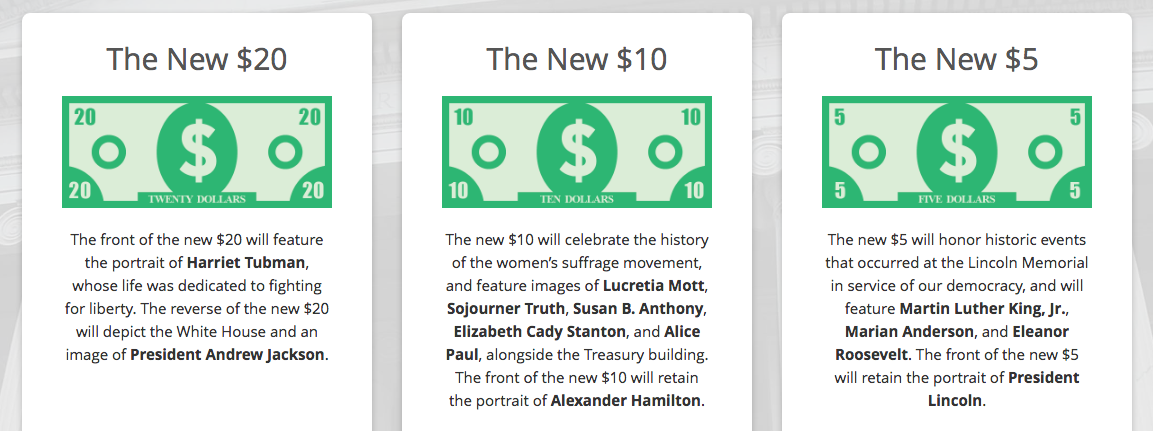
In a historic overhaul of U.S. currency, Treasury Secretary Jack Lew announced Wednesday that Harriet Tubman, the slave turned abolitionist, will be featured on the front of a newly redesigned $20 note.
President Andrew Jackson, a controversial figure due to his harsh treatment of Native Americans and currently featured on the front of the bill, will move to the back of the note.
"The decision to put Harriet Tubman on the new $20 was driven by thousands of responses we received from Americans young and old," Lew said in a public letter. "I have been particularly struck by the many comments and reactions from children for whom Harriet Tubman is not just a historical figure, but a role model for leadership and participation in our democracy."
Lew also announced changes to the $5 and $10 bills.

While founding father Alexander Hamilton will remain on the front of the new $10 note, it will also feature "leaders of the movement to give women the right to vote on the back."
The back of the bill will include the Treasury movement and images of suffrage leaders such as Lucretia Mott, Sojourner Truth, Susan B. Anthony, Elizabeth Cady Stanton, and Alice Paul, the department announced.
The $5 bill will also be redesigned to include civil rights icons and the historic events that happened at the steps of the Lincoln Memorial, the Treasury Department announced Wednesday.
The redesigned bill will include Martin Luther King Jr., Marian Anderson, and Eleanor Roosevelt. The front of the bill will continue to feature the portrait of President Abraham Lincoln.
The new redesigns will include several of the historic figures that were discussed when the department announced it would redesign the $20. But the biggest change will be Tubman's portrait prominently featured on the front of the $20 note, making her the first African-American, and the second woman, pictured on a U.S. bill.
Sacagawea was minted on the front of the dollar coin, and Pocahontas was previously included in the back of the $20 bill.
The new notes are expected to be unveiled by 2020, on the 100th anniversary of the 19th Amendment, which gave women the right to vote.

"Her incredible story of courage and commitment to equality embodies the ideals of democracy that our nation celebrates, and we will continue to value her legacy by honoring her on our currency," Lew said in the letter.
Calls from activists to include a woman on the nation's currency prompted Lew to announce last June that the $10 bill would be redesigned to remove the nation's first treasury secretary, Hamilton, in order to include a woman.
Perhaps Hamilton needs to thank Broadway showman Lin-Manuel Miranda for elevating him to pop culture relevance through his Pultizer Prize–winning musical, but Lew also announced Hamilton will remain on the $10 note.
When Miranda, who wrote and stars in Hamilton, met with Lew in Washington, D.C., in March, he signaled his character would remain the $10 Founding Father.
I talked to @USTreasury about this on Monday. Sec. Lew told me "you're going to be very happy." #wegetthejobdone https://t.co/ZkLFuSmz8M
Most famous for smuggling slaves through a network of safe houses known as the Underground Railroad in order to reach free states and Canada, Harriet Tubman was born into slavery herself around 1822 in Maryland.
As a teenager she was struck in the head by a slave master with a weight, leading to a head injury she would grapple with for the rest of her life.
She escaped in 1849 and made her way to Philadelphia, but returned to Maryland the following year to rescue her sister and her sister's two children from bondage.
Over a period of 10 years, she made some 19 trips back to the South to rescue more than 300 slaves, including many relatives, and guide them along the Underground Railroad, becoming a highly sought fugitive in the process.
During the Civil War, she worked as cook, nurse, and spy for the Union Army, famously guiding the raid at Combahee Ferry to liberate some 700 slaves.
She died in 1913 in Auburn, New York.
"Excepting [abolitionist] John Brown, I know of no one who has willingly encountered more perils and hardships to serve our enslaved people than [Harriet Tubman]," Frederick Douglass once said of her.

